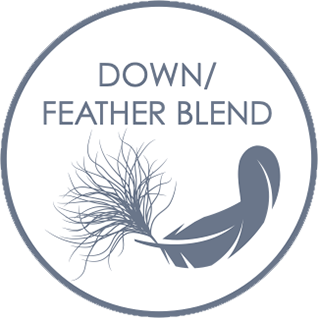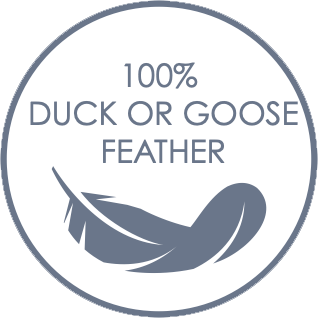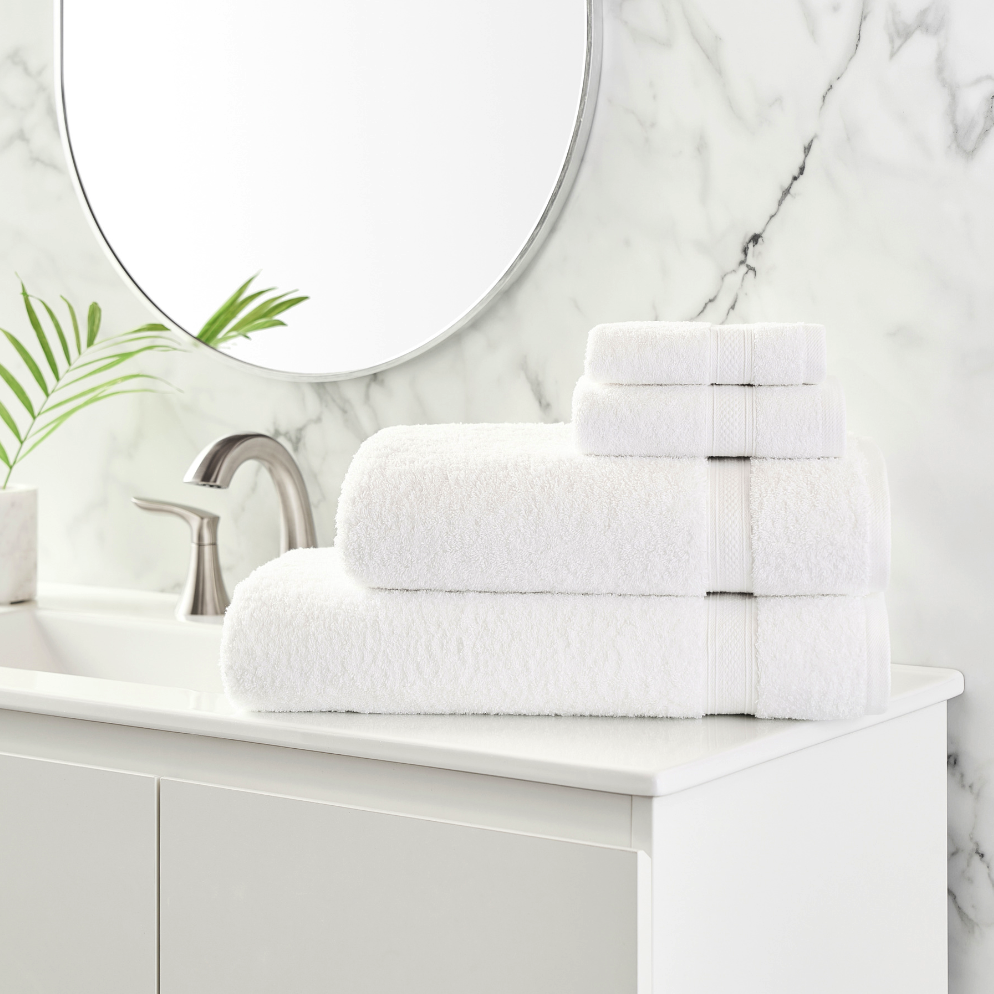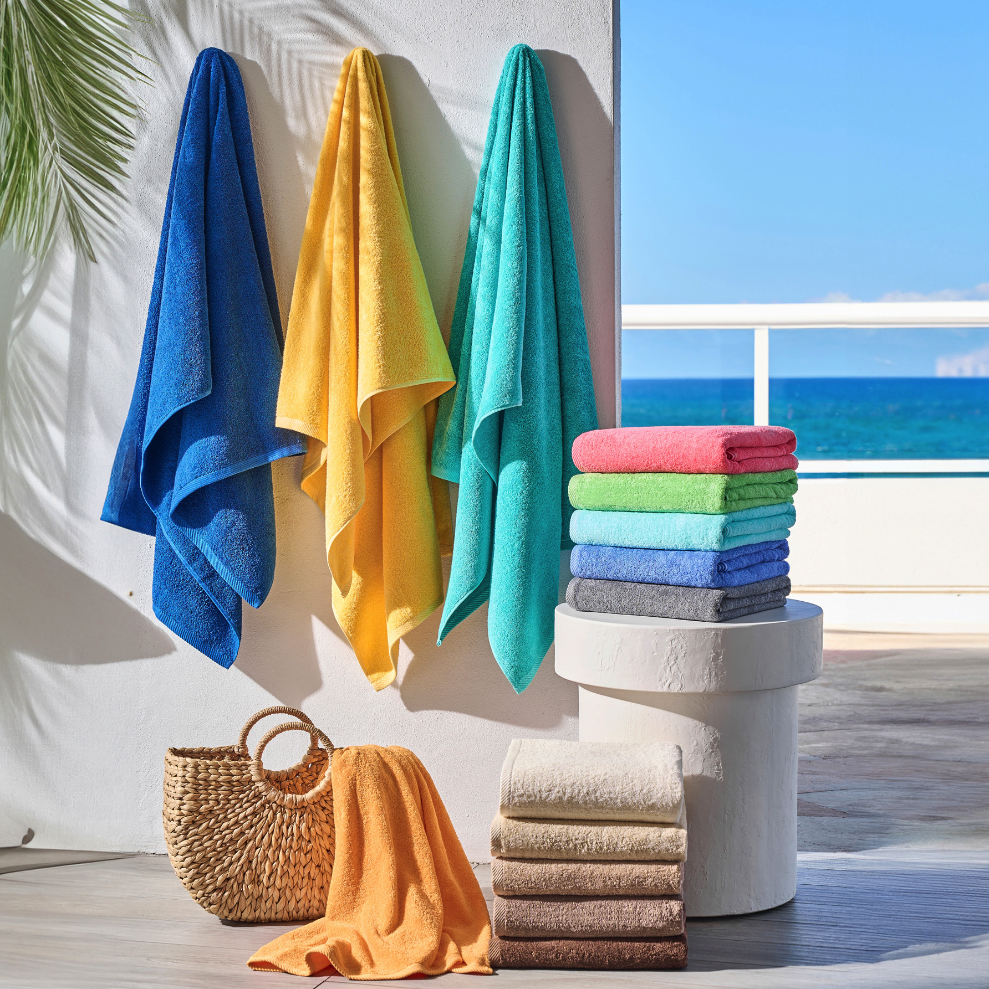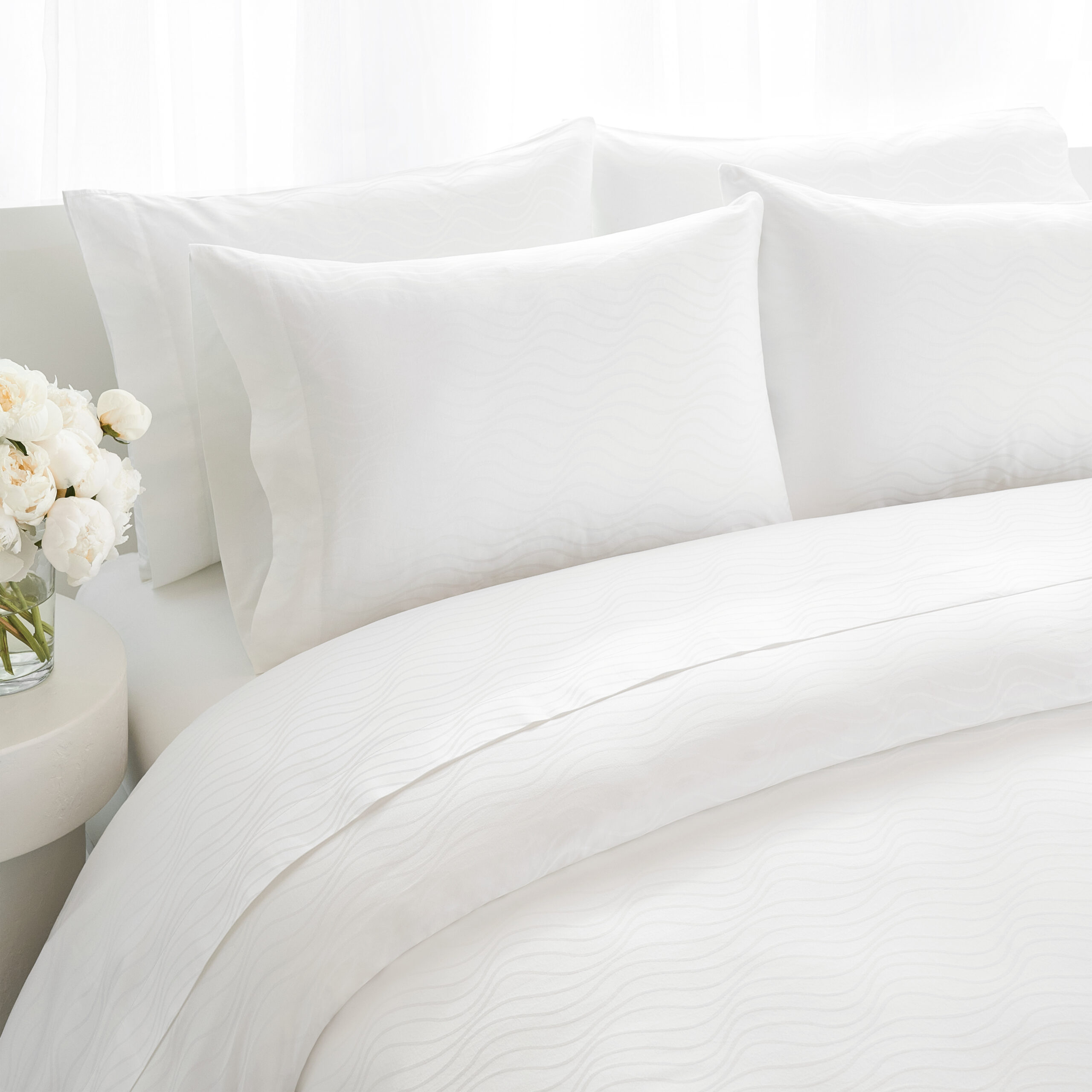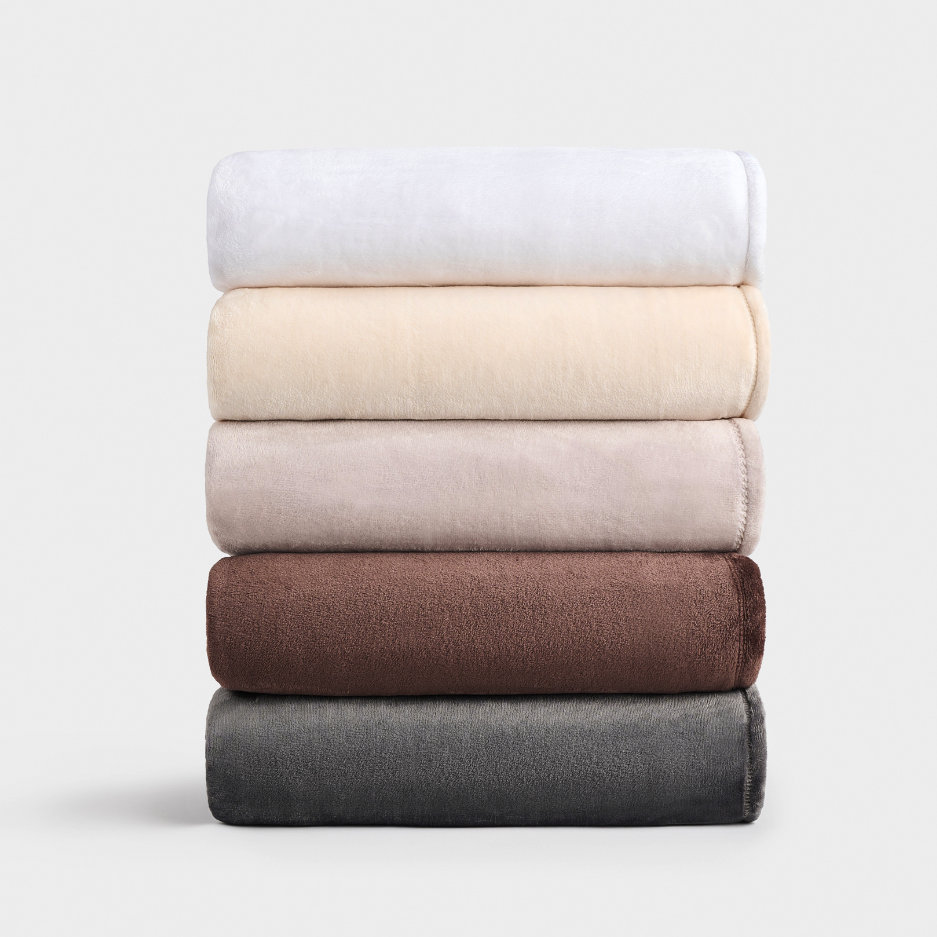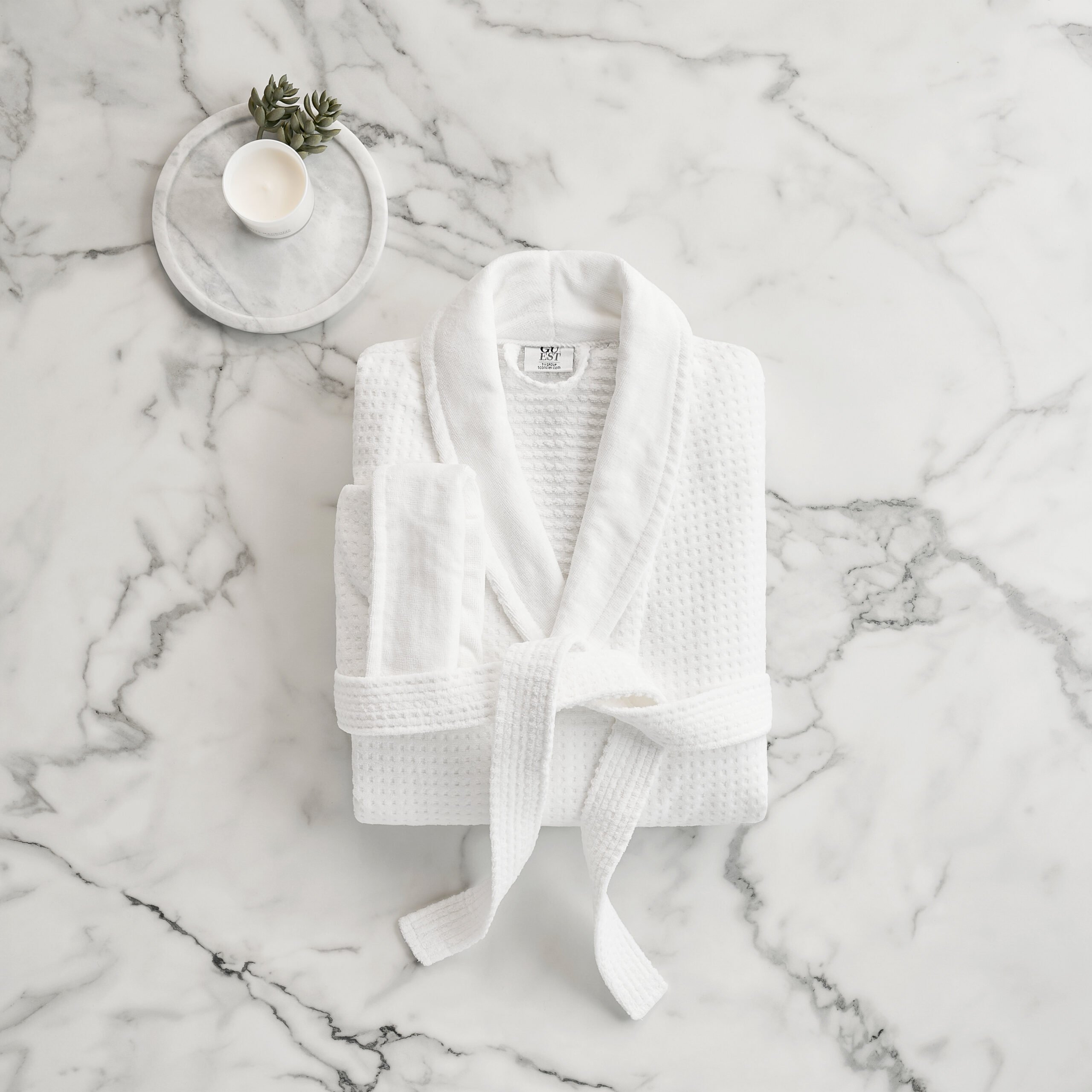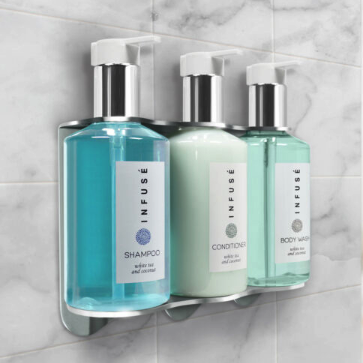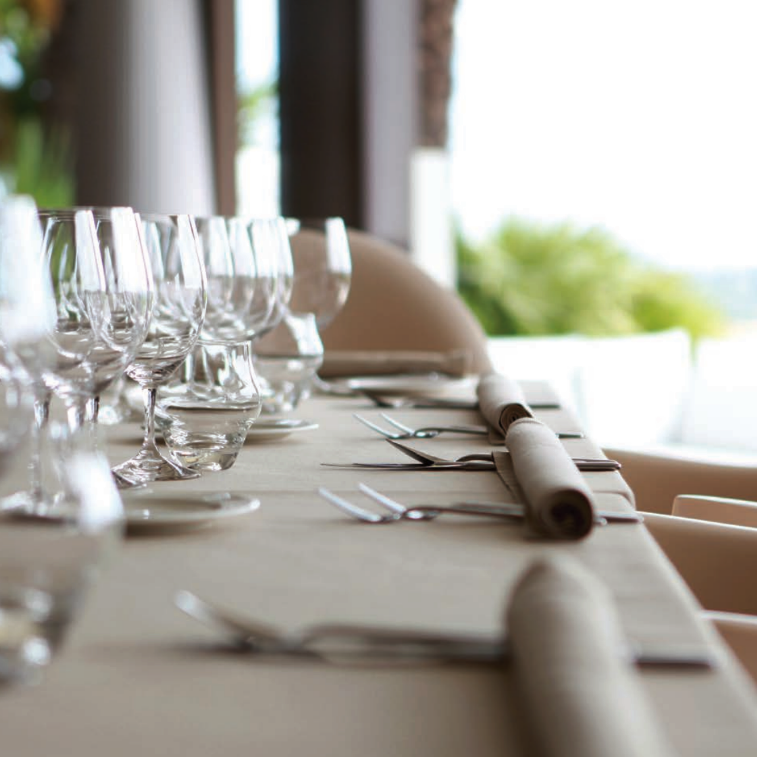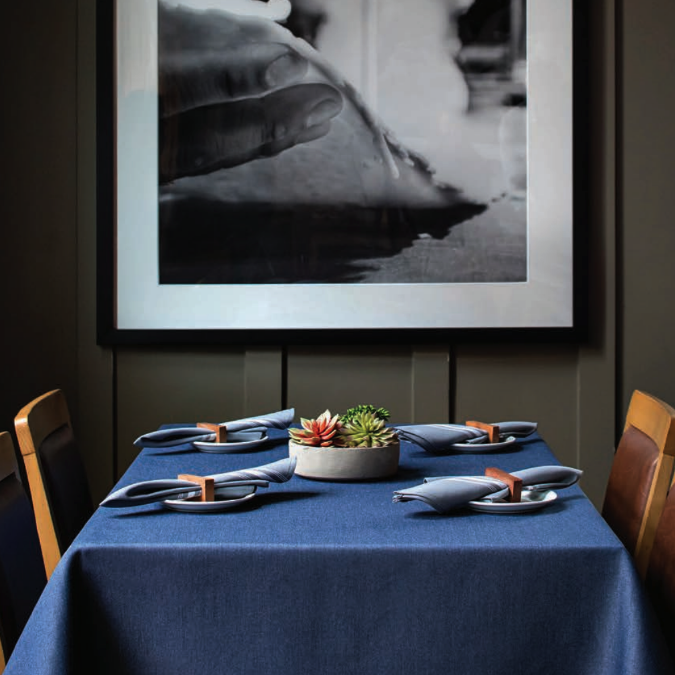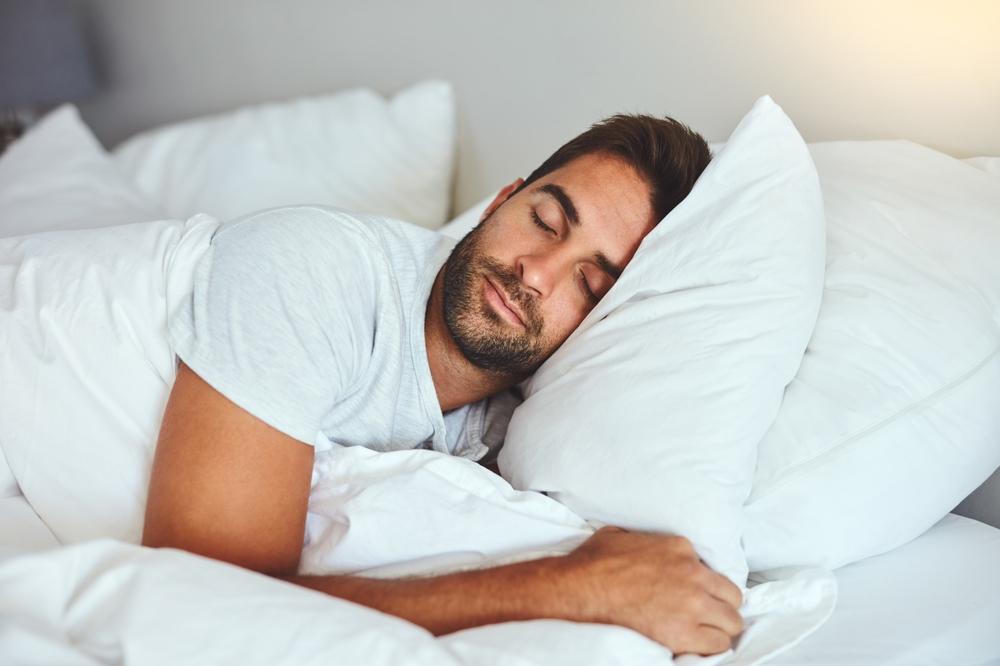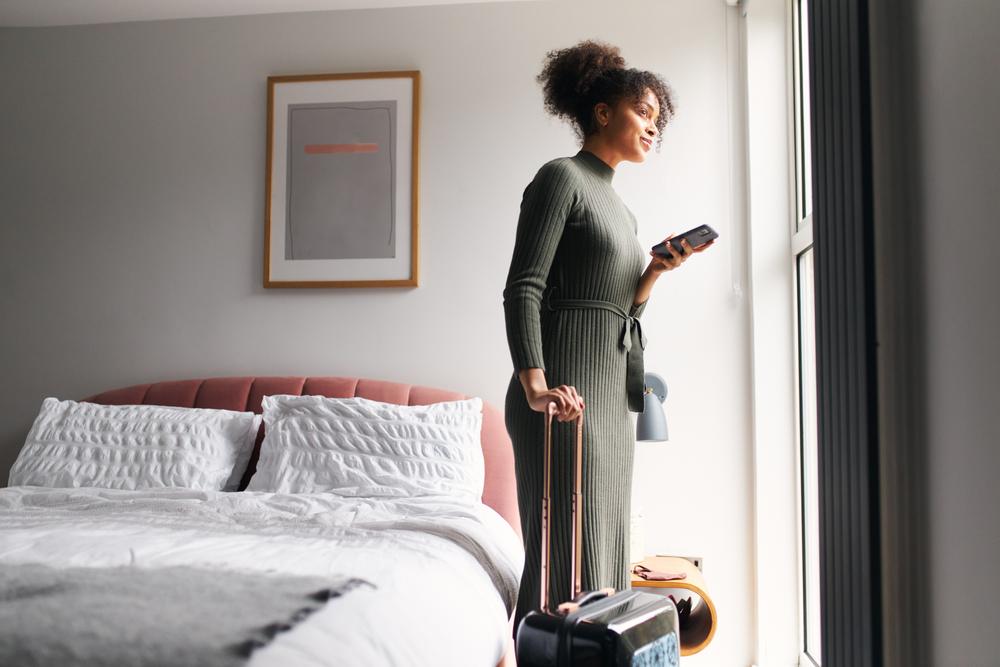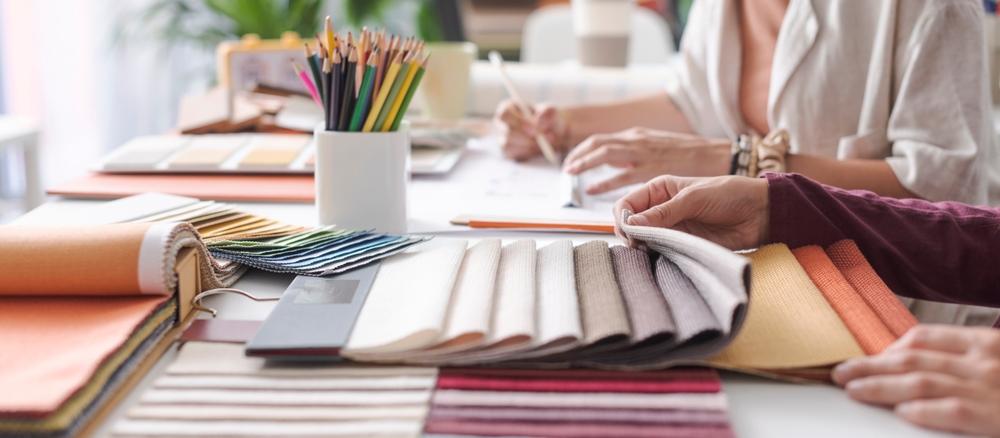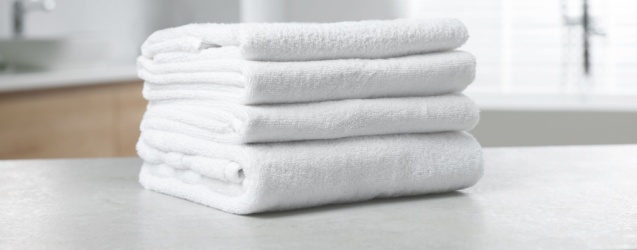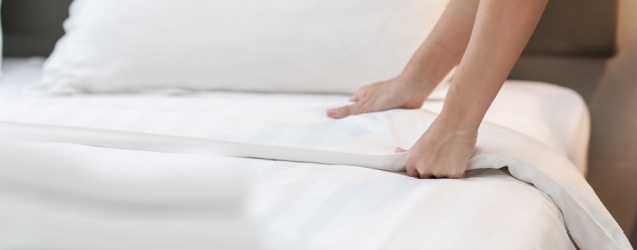Home / Cruise Lines / Rest Assured: The Definitive Guide To Selecting And Maintaining Hotel Pillows
Rest Assured: The Definitive Guide To Selecting And Maintaining Hotel Pillows
More than any other item on the bed, the pillow makes or breaks the guest’s sleep experience. Because it is the closest to the sleeper’s head, face, and neck, it is extremely important to the quality of sleep.
The pillow is the guest room item most likely to be remembered and talked about even after the stay is over. In fact, we get many calls from guests asking if they can buy the pillow they enjoyed at their hotel. That’s why we created our Carnival Comfort Collection — so retail buyers could enjoy the same products at home. Pillows are by far the most popular items in this collection.
Which pillow a guest likes is due in large part to personal preference. Factors such as firmness, fill material and cover material don’t necessarily indicate quality, but only what the individual user is comfortable with. So how can a hotel choose pillows that will satisfy all guests — not to mention the budget limitations?
Firmness: To Each His Own
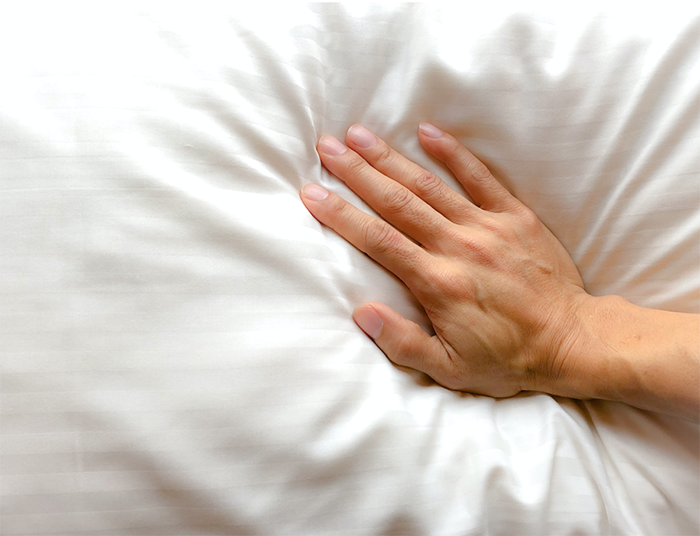
Firmness refers to how much “give” a pillow has when you put weight on it. Too much or too little firmness can cause restless sleep, headaches, neck/upper back pain, and exacerbation of breathing problems. The critical deciding factor is the individual’s sleeping position; a firmness that benefits a stomach sleeper may be uncomfortable for someone who sleeps on their back.
Here’s a quick rundown of the appropriate firmness for each sleeping position:
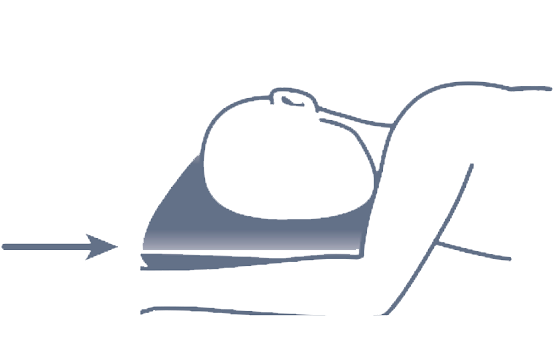
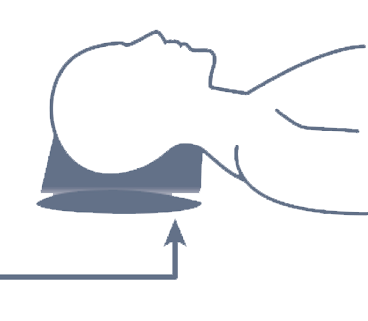
Side sleepers — firm support and extra thickness keep the head and neck aligned 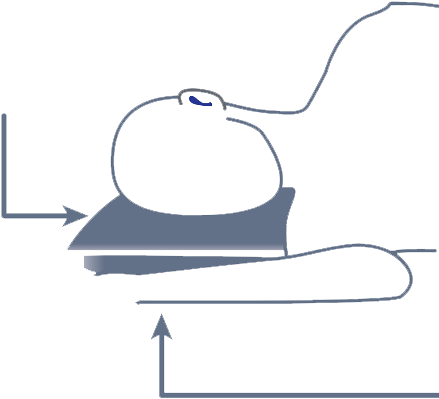
Multi-position sleepers — medium to medium-firm is suggested
Pillow support levels have been extensively marketed to retail consumers; so much so that guests may expect to have a choice of firmness for the pillows in their room. Of course, there’s no way for a hotel to know what position each guest sleeps in. Current solutions to this dilemma include putting two different firmness levels on the bed and perhaps a third option in the closet; or offering a pillow menu upon check-in.
T-Y Group and Harbor Linen carry a full range of firmness options, including:
The premium Glamour Pillow available in 4 firmnesses
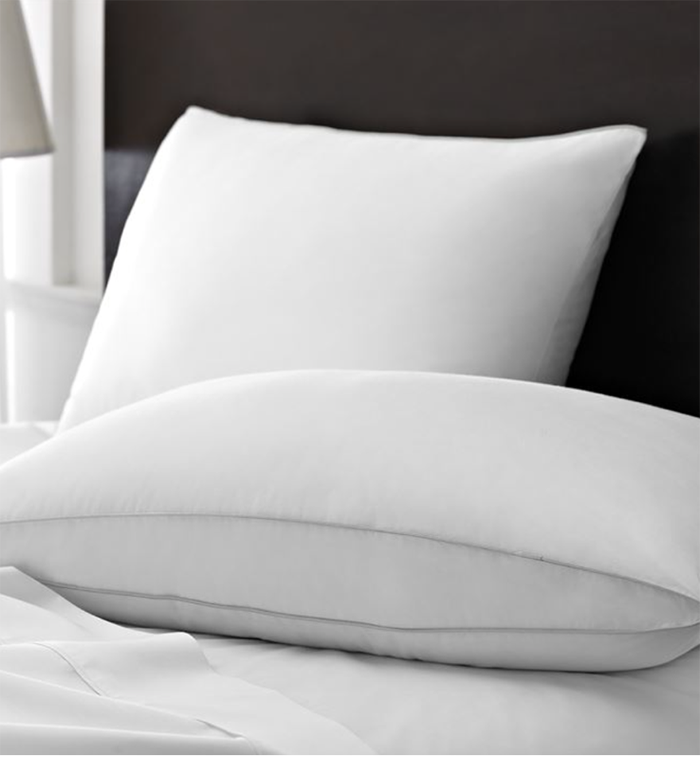
The soft/medium support Sleep Blueprint New Generation Pillow is a favorite of many hotel guests and our bestseller.
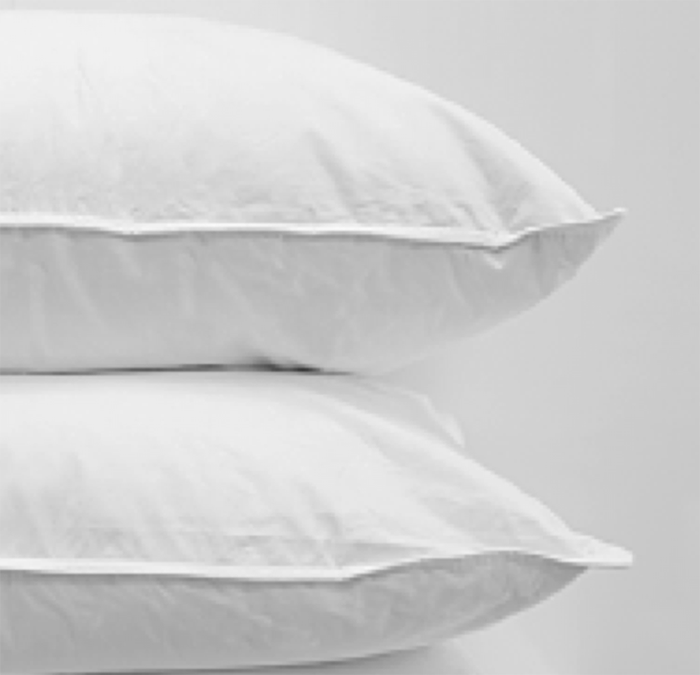
The firm support Sleep Blueprint Pillow Side 67

Fill: The Natural Vs. Synthetic Question
Natural fills — down, feather, or a combination — are traditionally considered the most luxurious; and their price reflects that. On the other hand, technologically advanced synthetic “down alternatives” are virtually indistinguishable from natural fills as well as more affordable and more universally accepted by guests.
The Case For Synthetic Fill
Synthetic (usually polyester) fill pillows are often a better fit for the hotel setting where lower cost and easier care are important. Their hypoallergenic properties make them suitable for use by all guests.
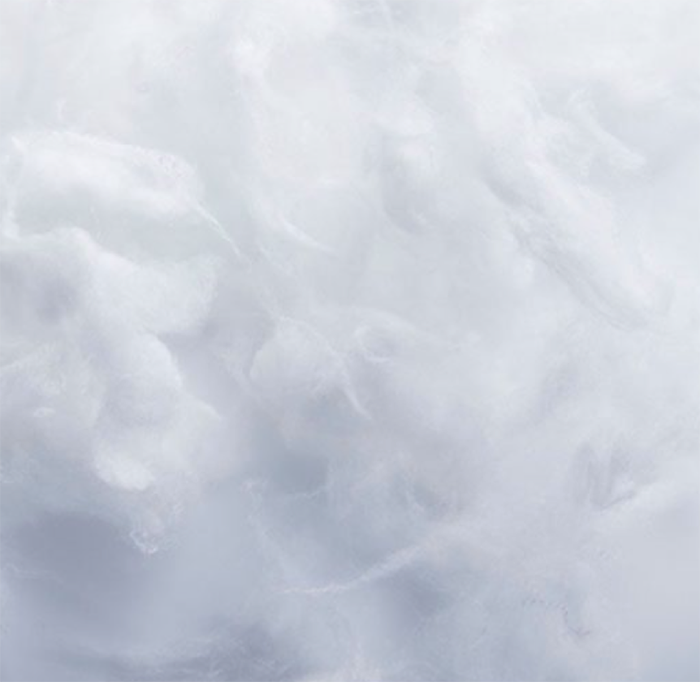
With today’s most advanced products, the trade-off in comfort is little to none, thanks to the ultra-thin poly fill that closely mimic down. Guests rarely can tell the difference between a good quality down alternative pillow and one that’s filled with natural down. Synthetic fills also offer a complete range of support levels from soft to extra firm, unlike the limited options of down/feather.

Our Glamour Pillow is an example of a down alternative that combines luxurious comfort for the guest with viability for hotel operations. Not only is it available in soft, medium, firm, and extra firm support levels, but each level has a completely different fiber fill for optimum experience. The softer pillow has more silky fill to mimic down, while the firmer one’s fill is similar to the memory foam feeling preferred by people who want maximum support.
Mid-priced, yet still luxurious choices are to be found in our Sleep Blueprint collection, which reduces costs by using a corded knife-edge — rather than gusseted — construction. (More about pillow construction below.) The down alternative fills in this collection are some of the best you can find on the market.
Sleep Blueprint Collection:
Sleep Blueprint New Generation medium support pillows, our most guest-requested style. The fill fiber’s denier (thickness) is even finer than silk, making it incredibly soft. Yet it is just as strong as any other synthetic fill and performs incredibly well in the commercial laundry. This non-allergenic microfiber was specifically engineered for hotel use.

Sleep Blueprint Side 67 firm support pillow, featuring “puffball” fibers which mimic the movement of down while providing a feeling like memory foam for side sleepers. The “no-clump” fiber ensures durability after wash and extended use.

Hotel properties with a smaller budget and lower customer expectations will prefer the unbeatable affordability of standard synthetic fills. These thicker polyester fibers are less soft, yet more durable. For purchasing decisions, their quality is indicated by their weight. In this category, our Softique Pillow is filled with 23 ounces of super slick cluster fibers for a soft, luxurious sleeping experience.
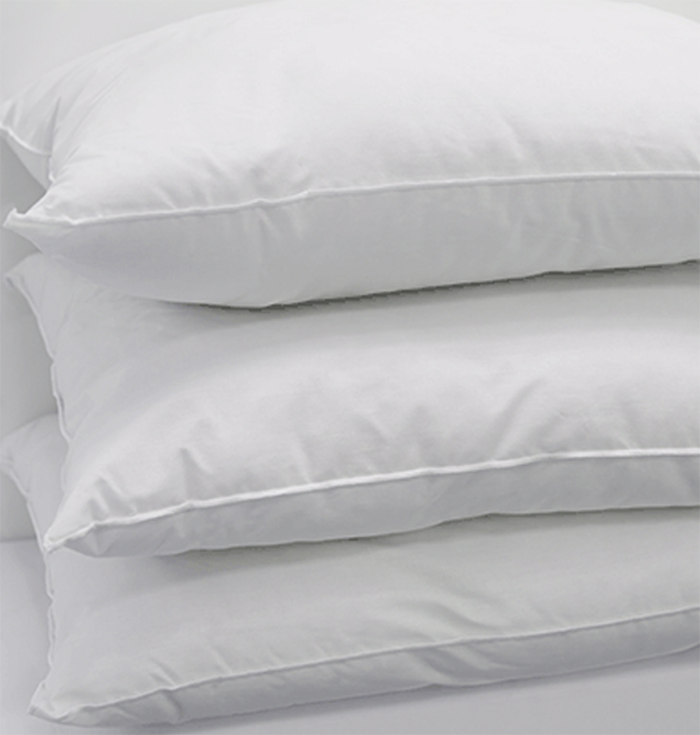
Synthetic/natural Combinations: The Best Of Both
Our New Generation® Zone Pillow epitomizes the latest revolution in pillow design. It has a core of small whole feathers is surrounded with synthetic down-like fiber fill. Thus, guests can enjoy the softness of natural fill with the more stable support of synthetic fiber. Hotels can provide a natural offering while controlling the budget with the New Generation Zone’s superior durability.
Pros & Cons Of Natural Fills
When referring to pillow fills, “natural” nearly always means down, feather or a combination of the two.
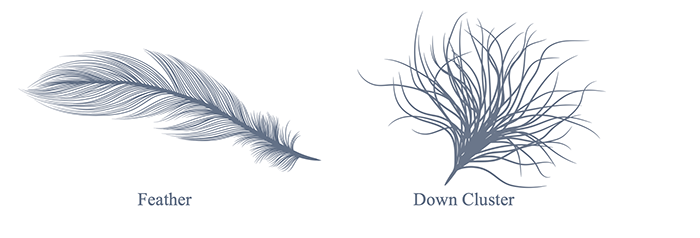
Because of its fine clusters, down is the softest and silkiest. Feather fill offers a bit more support. A blend of down and feathers provides characteristics of both while costing less than 100% down.
Known for their luxurious softness, natural fills also offer the advantage of temperature regulation. They conserve body heat when the air is cold and stay cool when the air is warm.
However, not all guests want to sleep on a natural fill pillow. Allergies to down and feathers are common. And they are only capable of providing soft — or at best medium —firm support (read more about pillow firmness levels below).
In addition, there has been criticism of down/feather products from animal rights groups. Hotels should make sure that they are buying their product from a responsible source that treats animals well.
Natural fill pillows require more attention in laundering, especially with regard to moisture removal. Contrary to what you might expect from duck and goose products, moisture will quickly deteriorate down and feathers; so the fill must be completely dry when it comes out of the dryer. Guests who sweat or go to bed with wet hair will significantly shorten the life of this type of pillow. A waterproof pillow encasement can help avoid this damage.
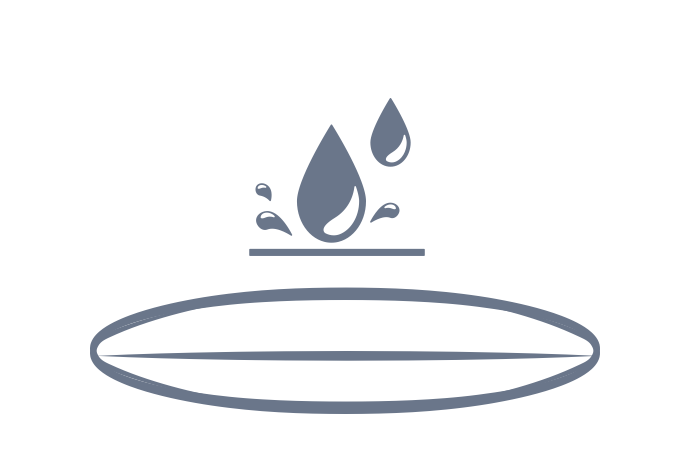
Natural fills also require a special, extremely densely woven ticking to prevent the sharp ends of the feathers from poking out. This is another reason for their high prices.
For the hotel business, another drawback is the price fluctuation which makes budget control and forecasting difficult. If it’s a bad year for bird flu, supply will be limited and prices will rise.
Ranking natural fills in order of quality/price:
- 100% duck or goose down

- Duck or goose down/feather blend

- Duck or goose feather

Rather than mixing down and feathers together in one fill, some pillows use a chamber construction: feathers in the center for support, and a surrounding layer of down for smooth comfort under the sleeper’s head.
T-Y Group and Harbor Linen’s Soft & Downey Pillow features this structure. The central chamber is filled with white duck feathers and the outer sandwich compartment contains white duck down.
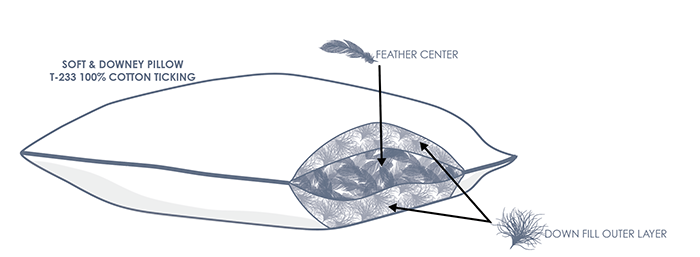
A premium down-proof ticking made of 233-thread count 100% cotton covers this machine-washable pillow.
Well Covered: What's In A Ticking Fabric
Most likely, the pillow ticking will not be touched or seen by your guests (unless they take the pillowcases off). Therefore, the important characteristics of ticking are its durability and appropriateness for the fill type.
Cotton is the most common fabric choice for pillow covers. Its breathability increases guest comfort as well as minimizing moisture retention inside the fill. Cotton/polyester blends are also popular, as the polyester adds strength, wrinkle resistance, and stain resistance to the cotton.
As mentioned above, down and feathers require a very tightly woven ticking to keep the fill contained. Look for a high thread count and/or the phrase “down-proof” listed for these pillow covers.
Pillow Construction: Built For Strength And Comfort
Manufacturing techniques can also elevate the comfort and longevity of the pillow. Here’s a quick overview of construction terms you might come across.
Piped or corded edges: reinforces the stress points along the seam to prevent splitting
Gusset: a side wall that creates a box shape, allowing the pillow to hold more fill and maintain a higher loft than a knife edge pillow
Double needle stitching: a second row of stitching next to the seam helps withstand stress during use or laundering
Our Glamour Pillow is an example of a gusseted and piped design. This unique side gusset allows the pillow to maintain its overfilled shape through extended use and multiple washes, delaying the natural process of pillows to flatten out over time. Another benefit is that the pillow can stand upright on the bed without collapsing — a luxurious look that both hotels and guests love.

Extending Pillow Life In The Laundry
More than any other bedding item, pillow lifespan is affected by how — and how often — it is washed. T-Y Group and Harbor Linen laundry experts have put together their top tips for minimizing damage during cleaning.
Neither natural nor synthetic pillows can be washed very often. Most hotels wash once per quarter. Even a monthly washing will compact and degrade the fill at an unacceptable rate. Also, the fill will soften with each trip through the laundry, so that what originally was a firm support pillow becomes a medium (or even soft_ support one.
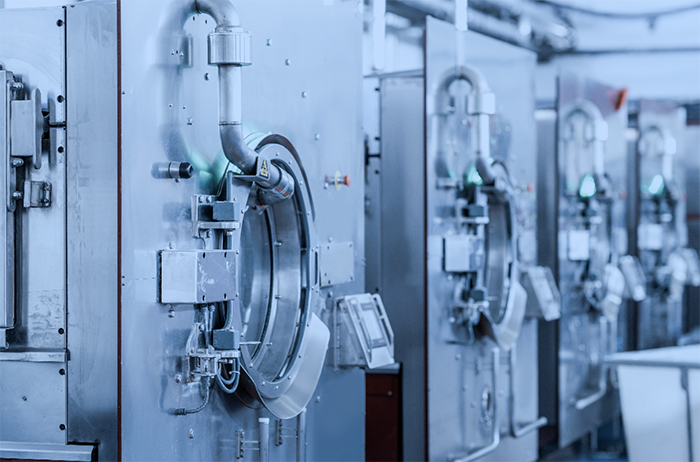
Pillows that were bought together should be washed together. Aging them at the same rate will simplify replacement scheduling.
These guidelines may seem to be contraindicated during the coronavirus pandemic, given the hospitality industry’s efforts to sanitize guest rooms and reassure customers that it’s safe to stay there. An easy, cost-effective solution is to put the pillow into an anti-microbial encasement which is easily washed between guests. Pillow cleaning schedules can then remain at optimum frequency for life extension.
In addition to hygienic demands, protectors extend pillow life by reducing wear and tear, protect guests from allergens and if they’re waterproof, prevent staining. We won’t be surprised to see encasement-style protectors become a permanent part of the hotel bed.
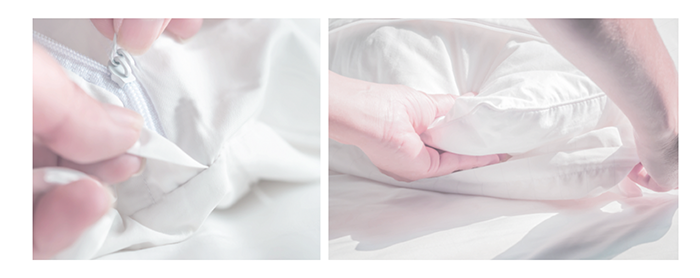
We offer pillow protectors with a selection of protection factors of protection, including
Pillow Protector T-180 — breathable comfort
Pillow Shield — waterproof
Pillow Shield Anti-Microbial — waterproof
CleanRest PRO Max — virus barrier specifically for COVID-19
Learn more about our antimicrobial protectors for bedding items such as pillows, comforters, duvets and blankets in this article.
We Can Help You Choose The Perfect Pillows
Whatever your pillow priority — comfort or budget — our T-Y Group and Harbor Linen experts are always ready to help you make the right decisions for your business. We’re the hospitality industry’s one-stop shop for the guest room and beyond.
Table of Contents
Join the 1C Family as your Trusted Luxury Linen Provider
Featured Products
Choose from 14 Luxury Hotel Towel and Pool Towel Collections. We offer 100% Cotton, Cotton-Polyester blend, Pima, and Bamboo. From quick-drying absorbent towels to intricate borders and weaves, we have the right towel collection for you!
We offer a wide selection of luxury hotel sheets, bedding, blankets, and pillows in various qualities to suit your specific needs. Whether you’re looking for premium cotton sheets, soft and durable blankets, or plush pillows, we have options that ensure both comfort and elegance for your guests.
Our premium bathrobes can be found and many luxury hotels and spas, adding a touch of elegance and comfort to your guest experience. We also offer a range of guest room amenities.


